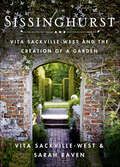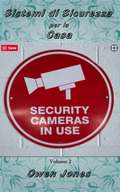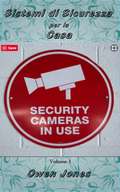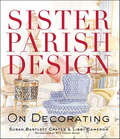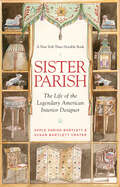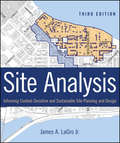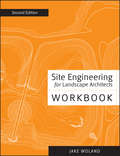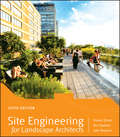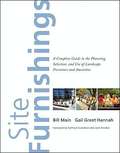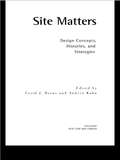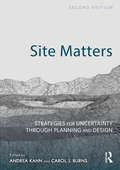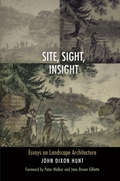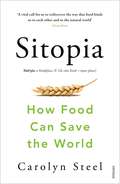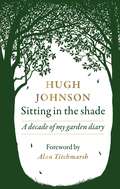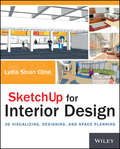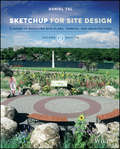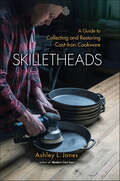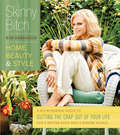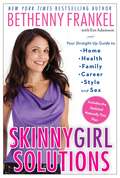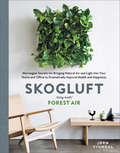- Table View
- List View
Sissinghurst: Vita Sackville-West and the Creation of a Garden
by Vita Sackville-West Sarah RavenFrom 1946 to 1957, Vita Sackville-West, the British poet, bestselling author of All Passion Spent and maker of Sissinghurst, wrote a weekly column in the Observer depicting her life at Sissinghurst, showing her to be one of the most visionary horticulturalists of the twentieth-century. With wonderful additions by Sarah Raven, a famous British gardener in her own right who is married to Vita's grandson Adam Nicolson, Sissinghurst draws on this extraordinary archive, revealing Vita's most loved flowers, as well as offering practical advice for gardeners. Often funny and completely accessibly written with color and originality, it also describes details of the trials and tribulations of crafting a place of beauty and elegance.Sissinghurst has gone on to become one of the most visited and inspirational gardens in the world and this marvellous book, illustrated with drawings and original photographs throughout, shows us how it was created and how gardeners everywhere can use some of the ideas from both Sarah Raven and Vita Sackville-West. Sissinghurst is a magnificent portrait of a garden and a family.
Sistemas de Segurança Residencial II: Como se faz... (Como se faz... #20)
by Owen JonesSistemas de Segurança Residencial II Olá e obrigado por comprar este e-book, chamado 'Sistemas de Segurança Residencial II'. Espero que você ache as informações úteis, práticas e lucrativas. As informações contidas neste e-book, sobre os vários aspectos da proteção de sua família, casa e questões relacionadas, estão organizadas em 15 capítulos, com cerca de 500 a 600 palavras cada. Espero que interesse a aqueles que estão preocupados com a segurança de sua família, lar e bens. Como um bônus adicional, concedo a você permissão para usar o conteúdo em seu próprio site, blogs e newsletters, embora seja melhor que você reescreva as informações em suas próprias palavras primeiro. Você também pode dividir o livro e revender os artigos. De fato, o único direito que você não tem é o de revender ou doar o livro como ele foi entregue a você.
Sistemas de Segurança Residencial: Volume I (Como se faz... #33)
by Owen JonesSistemas de Segurança Residencial volume I Sugestões para prevenção de potenciais questões de segurança dentro e ao redor de sua residência As informações contidas neste e-book, sobre os vários aspectos da proteção de sua família, casa e questões relacionadas, estão organizadas em 15 capítulos, com cerca de 500 a 600 palavras cada. Espero que seja de interesse dos que se preocupam com sua segurança. Como um bônus adicional, concedo a você permissão para usar o conteúdo em seu próprio site, blogs e newsletters, embora seja melhor que você reescreva as informações em suas próprias palavras primeiro. Você também pode dividir o livro e revender os artigos. De fato, o único direito que você não tem é o de revender ou doar o livro como ele foi entregue a você.
Sistemi di sicurezza per la casa II (Come fare ... #20)
by Owen JonesSalve, e grazie per aver acquistato questo ebook dal titolo “Sistemi di sicurezza per la casa II”. Spero che troviate queste informazioni utili, valide e vantaggiose. Le informazioni in questo ebook riguardanti vari aspetti della protezione della vostra famiglia e della vostra casa, e le idee correlate, sono suddivise in 15 capitoli di circa 500-600 parole ciascuno. Spero che sia interessante per coloro che si preoccupano della sicurezza della propria famiglia, della propria casa e dei propri beni. Come bonus aggiuntivo, vi do il permesso di utilizzare il contenuto sul vostro sito web o sui vostri blog o newsletter, anche se è consigliabile che prima lo riscriviate con parole vostre. Potete anche suddividere il libro e rivendere gli articoli. Infatti l’unico diritto che non avete è quello di rivendere o distribuire il libro così come lo avete ricevuto.
Sistemi di sicurezza per la casa: volume 1 (Come fare per... #33)
by Owen JonesLe informazioni in questo ebook riguardanti vari aspetti della protezione della vostra famiglia e della vostra casa, e le idee correlate, sono suddivise in 15 capitoli di circa 500-600 parole ciascuno. Spero che sia interessante per coloro che si preoccupano della propria sicurezza. Come bonus aggiuntivo, vi do il permesso di utilizzare il contenuto sul vostro sito web o sui vostri blog o newsletter, anche se è consigliabile che prima lo riscriviate con parole vostre. Potete anche suddividere il libro e rivendere gli articoli. Infatti l’unico diritto che non avete è quello di rivendere o distribuire il libro così come lo avete ricevuto.
Sister Parish Design: On Decorating
by Susan Bartlett Crater Libby CameronComfort is the essential element of a successful interior and the hallmark of the Parish-Hadley style. In Sister Parish Design, Libby Cameron, Sister's last protégé, and Susan B. Crater, Sister's granddaughter, explore this aspect and much more in a series of conversations with the leading decorators of today. Sister Parish is the iconic American decorator of her generation. Her use of flowered chintzes and overstuffed armchairs combined with unexpected items, like patchwork quilts and painted furniture, is credited with popularizing what is known as American Country–style during the 1960s. Her passion for bold color and mixed patterns invoked charm, imagination, and a lived-in look to her rooms. Her philosophy was to be unafraid and to put things together because you liked them--not because they matched. Filled with beautifully-rendered watercolor illustrations, Sister Parish Design is more than just a stunning book—it is an inspirational resource that all decorating aficionados will want to add to their bookshelf.
Sister Parish: The Life of the Legendary American Interior Designer
by Apple Parish Bartlett Susan Bartlett CraterThis “fast-moving, entertaining biography” of the woman behind the Parish Hadley interior design firm is “like eavesdropping on a lively society lunch” (Publishers Weekly).A New York Times Notable BookSister—as she was called by family and friends—was born Dorothy May Kinnicutt into a patrician New York family in 1910, and spent her privileged early life at the right schools, yacht clubs, and coming-out parties. Compelled to work during the lean years of the Depression, she combined her innate design ability with her upper-echelon social connections to create an extraordinarily successful interior decorating business. The Parish-Hadley firm’s list of clients reads like an American Who’s Who, including Astors, Paleys, Rockefellers, and Whitneys—and she helped Jacqueline Kennedy transform the White House from a fusty hodge-podge into a historically authentic symbol of American elegance. Cozy, airy, colorful but understated, her style came to be known as “American country,” and its influence continues to this day. Compiled by her daughter and granddaughter from Sister’s own unpublished memoirs, as well as from hundreds of interviews with family members, friends, staff, world-renowned interior designers (Mark Hampton, Mario Buatta, Keith Irvine, Bunny Williams, and her longtime partner Albert Hadley, among many others), and clients including Annette de la Renta, Glenn Bernbaum, and Mrs. Thomas Watson, Sister Parish takes us into the houses—and lives—of some of the most fascinating and famous people of this inimitable woman’s time. Fully updated, the revised edition features a new foreword by Albert Hadley and an appreciation by Bunny Williams, who began her career at Parish-Hadley.“Selections from Mrs. Parish’s own rather wonderful, often moving, reminiscences, intercut with observations from her family, employees, clients and friends.” —The New York Times Book Review “Sister’s delightfully self-deprecating humor illuminates the biography throughout.” —Kirkus ReviewsIncludes photographs
Site Analysis
by James A. LagroThe process-oriented guide to context-sensitive site selection, planning, and designSustainable design is responsive to context. And each site has a unique set of physical, biological, cultural, and legal attributes that presents different opportunities and constraints for alternative uses of the site. Site analysis systematically evaluates these on-site and off-site factors to inform the design of places-including neighborhoods and communities-that are attractive, walkable, and climate-resilient.This Third Edition of Site Analysis is fully updated to cover the latest topics in low-impact, location-efficient design and development.This complete, user-friendly guide:Blends theory andpractice from the fields of landscape architecture, urban planning, architecture, geography, and urban designAddresses important sustainability topics, including LEED-ND, Sustainable Sites, STAR community index, and climate adaptationDetails the objectives and visualization methods used in each phase of the site planning and design processExplains the influence of codes, ordinances, and site plan approval processes on the design of the built environmentIncludes more than 200 illustrations and eight case studies of projects completed by leading planning and design firmsSite Analysis, Third Edition is the ideal guide for students taking courses in site analysis, site planning, and environmental design. New material includes review questions at the end of each chapter for students as well as early-career professionals preparing for the ARE, LARE, or AICP exams.
Site Engineering Workbook
by Jake WolandA study guide to help you master the principles and practices of site engineeringWhether used in conjunction with the Sixth Edition of Site Engineering for Landscape Architects or on its own, this Workbook is an invaluable learning resource for students and instructors, as well as for professionals studying for the LARE and other licensing exams.Organized into chapters that correspond with those in the textbook, the Workbook offers:Practice questions, problems, and review exercises designed to reinforce site engineering conceptsSite and grading diagrams that make it possible to apply site engineering concepts in a practical wayFour types of questions-observations, short answer, long answer, and graphic exercises-that offer opportunities to approach the material from varied angles and levels of complexityAnswers to workbook problems, provided online via an instructor's siteDesigned for the needs of both students and professionals, this Workbook makes it easier than ever for you to quickly master the principles and practices involved in today's environmentally sound site engineering.
Site Engineering for Landscape Architects
by Jake Woland Kurt Nathan Steven StromThe Leading Guide To Site Design And Engineering- Revised And UpdatedSite Engineering for Landscape Architects is the top choice for site engineering, planning, and construction courses as well as for practitioners in the field, with easy-to-understand coverage of the principles and techniques of basic site engineering for grading, drainage, earthwork, and road alignment. The Sixth Edition has been revised to address the latest developments in landscape architecture while retaining an accessible approach to complex concepts.The book offers an introduction to landform and the language of its design, and explores the site engineering concepts essential to practicing landscape architecture today-from interpreting landform and contour lines, to designing horizontal and vertical road alignments, to construction sequencing, to designing and sizing storm water management systems. Integrating design with construction and implementation processes, the authors enable readers to gain a progressive understanding of the material.This edition contains completely revised information on storm water management and green infrastructure, as well as many new and updated case studies. It also includes updated coverage of storm water management systems design, runoff calculations, and natural resource conservation. Graphics throughout the book have been revised to bring a consistent, clean approach to the illustrations.Perfect for use as a study guide for the most difficult section of the Landscape Architect Registration Exam (LARE) or as a handy professional reference, Site Engineering for Landscape Architects, Sixth Edition gives readers a strong foundation in site development that is environmentally sensitive and intellectually stimulating.
Site Furnishings
by Bill Hannah Main Gail GreetIntroducing the first all-in-one guide to site furniture principles, processes, and best practices Furniture matters-outdoors as well as in. Understanding the connections between site and site furniture enhances the creative opportunities for designers of outdoor spaces and increases their ability to influence the long-term success of the spaces they design. Site Furnishings comprehensively examines how to elevate the design of site furnishings to achieve programming goals. Intended for landscape architects, designers, and contractors, as well as urban planners and designers, civil engineers, and other professionals, this accessible resource explores the ways that furniture contributes to the quality of outdoor spaces, and provides conceptual tools, technical information, and examples of successful applications. Just as important, it provides an in-depth overview of the elements that comprise site furnishings and the critical issues that inform site furniture selection. Supported by case studies and an abundance of high-quality photographs, Site Furnishings introduces professionals from all fields involved in site design to: Best practices, with a look at how these approaches lead to functional, responsive, and supportable outdoor spaces A step-by-step process for developing a furniture plan A typology of places that encompasses a wide spectrum of outdoor spaces, including parks and plazas, streetscapes, retail malls, theme parks, and transit hubs Management's role in the success of public spaces, supported by a detailed case study of how site and furniture management is implemented at New York's Bryant Park Sustainability, including the major issues involved in making sustainable site choices, where to obtain information, and industry initiatives to promote them Technical information on materials, installation methods, maintenance, and functional requirements of street and site furniture
Site Matters: Design Concepts, Histories and Strategies
by Carol J Burns Andrea KahnOne of the trends in twentieth century architecture and planning has been to denigrate and ignore the site, or larger context (both physical and social), surrounding a building or set of buildings. Focussing on Le Corbusier's designs, Site Matters presents that first considered theory and vocabulary for the inevitable reaction against Modernism in planning, beginning in the 1960s and swelling through the 1980s as architects and planners alike developed a new appreciation of site, reincorporating the wider context into their plans. Theoretical essays and empirically grounded pieces combine to provide the language and theory of this re-emergence of site, looking at Le Corbusier's designs, contemporary suburbs, and the planning agendas involved at the World Trade Center site. Groundbreaking and innovative, Site Matters provides valuable theory and vocabulary for planners and architects.
Site Matters: Strategies for Uncertainty Through Planning and Design
by Andrea Kahn Carol J. BurnsIn the era of the Anthropocene, site matters are more pressing than ever. Building on the concepts, theories, and multi-disciplinary approaches raised in the first edition, this publication strives to address the changes that have taken place over the last 15 years with new material to complement and re-position the initial volume. Reaching across design disciplines, this highly illustrated anthology assembles essays from architects, landscape architects, urban designers, planners, historians, and artists to explore ways to physically and conceptually engage site. Thoughtful discourse and empirically grounded pieces combine to provide the language and theory to contextualize the meanings of site in the built environment. The increasingly complex hybridity of constructed environments today demands new tools for thinking about and working with site. Drawing contributions from outside and within the traditional design disciplines, this edition will trace important developments in site thinking with new essays on topics such as climate change, landscape as infrastructure, shifts from global to planetary urbanization debates, and the proliferation of participatory site transformation practices. Edited by two leading practitioners and academics, Site Matters juxtaposes timeless contributions from individuals including Elizabeth Meyer, Robert Beauregard, and Robin Dripps with original new writings from Peter Marcuse, Jane Wolff, Neil Brenner, and Thaisa Way, amongst others, to recontextualize and reignite the debate around site. An ideal text for students, academics, and researchers interested in site and design theory.
Site, Sight, Insight: Essays on Landscape Architecture
by Peter Walker Jane Brown Gillette John Dixon HuntSite, Sight, Insight presents twelve essays by John Dixon Hunt, the leading theorist and historian of landscape architecture. The collection's common theme is a focus on sites, how we see them and what we derive from that looking. Acknowledging that even the most modest landscape encounter has validity, Hunt contends that the more one knows about a site and one's own sight of it (an awareness of how one is seeing), the greater the insight. Employing the concepts, tropes, and rhetorical methods of literary analysis, he addresses the problem of how to discuss, understand, and appreciate places that are experienced through all the senses, over time and through space.Hunt questions our intellectual and aesthetic understanding of gardens and designed landscapes and asks how these sites affect us emotionally. Do gardens have meaning? When we visit a fine garden or designed landscape, we experience a unique work of great complexity in purpose, which has been executed over a number of years--a work that, occasionally, achieves beauty. While direct experience is fundamental, Hunt demonstrates how the ways in which gardens and landscapes are communicated in word and image can be equally important. He returns frequently to a cluster of key sites and writings on which he has based much of his thinking about garden-making and its role in landscape architecture: the gardens of Rousham in Oxfordshire; Thomas Whately's Observations on Modern Gardening (1770); William Gilpin's dialogues on Stowe (1747); Alexander Pope's meditation on genius loci; the Désert de Retz; Paolo Burgi's Cardada; and the designs by Bernard Lassus and Ian Hamilton Finlay.
Sitopia: How Food Can Save the World
by Carolyn Steel'A visionary look at how quality food should replace money as the new world currency' Tim Spector'Hugely ambitious and beautifully written...destined to become a modern classic' Bee WilsonHow we search for, make and consume food has defined human history. It transforms our bodies and homes, our politics and our trade, our landscapes and our climate. But by forgetting our culinary heritage and relying on cheap, intensively produced food, we have drifted into a way of life that threatens our planet and ourselves.What if there were a more sustainable way to eat and live? Drawing on many disciplines, as well as stories of the farmers, designers and economists who are remaking our relationship with food, this inspiring and deeply thoughtful book gives us a provocative and exhilarating vision for change, and points the way to a better future.'Utterly brilliant' Thomasina MiersWINNER OF THE 2021 GUILD FOOD OF WRITERS AWARD FOR BEST FOOD BOOK*Shortlisted for the Wainwright Prize 2020*
Sitting in the Shade: A decade of my garden diary
by Hugh JohnsonForeword by Alan TitchmarshFor more than 45 years Hugh Johnson has written Trad's Diary, delighting in recording his observations of his own garden, as well as many others, and of the wider natural world. Free to turn his attention to whatever is happening in that season, or simply something that piques his interest, his subjects are as diverse as the sounds of water, forest walks, the names of roses, the taste for shade he shares with Handel, the colours of autumn, the smell of rain, the private garden discovered within Beijing's Forbidden City or the first crocuses of spring. Month by month, Hugh shares with the reader through his easy, evocative writing an eclectic mix of thoughtful, topical and whimsical insights that will delight not only gardeners but anyone with an interest in nature in all its costumes.
Sitting in the Shade: A decade of my garden diary
by Hugh JohnsonForeword by Alan TitchmarshFor more than 45 years Hugh Johnson has written Trad's Diary, delighting in recording his observations of his own garden, as well as many others, and of the wider natural world. Free to turn his attention to whatever is happening in that season, or simply something that piques his interest, his subjects are as diverse as the sounds of water, forest walks, the names of roses, the taste for shade he shares with Handel, the colours of autumn, the smell of rain, the private garden discovered within Beijing's Forbidden City or the first crocuses of spring. Month by month, Hugh shares with the reader through his easy, evocative writing an eclectic mix of thoughtful, topical and whimsical insights that will delight not only gardeners but anyone with an interest in nature in all its costumes.
SketchUp for Interior Design: 3D Visualizing, Designing, and Space Planning
by Lydia ClineA practical guide to SketchUp addressing the specific needs of interior designers Already a common and popular tool for architects and landscape architects, SketchUp is increasingly finding a place in the professional workflow of interior designers. SketchUp for Interior Design is a practical introduction for interior designers and students who want to learn to use the software for their unique needs. The book covers the basics of creating 3D models before showing how to create space plans, model furniture, cabinetry, and accessories, experiment with colors and materials, incorporate manufacturers' models into project plans, and create final presentations and animated walk-throughs for clients. Each chapter includes clear explanations and helpful illustrations to make this an ideal introduction to the topic. Includes downloadable sample models and 39 tutorial videos Features sample questions and activities for instructors and additional online resources for students and self-learners Provides instruction on using SketchUp in both PC and Mac formats
SketchUp for Site Design
by Daniel TalThe site designer's guide to SketchUp's powerful modeling capabilities SketchUp for Site Design is the definitive guide to SketchUp for landscape architects and other site design professionals. Step-by-step tutorials walk you through basic to advanced processes, with expert guidance toward best practices, customization, organization, and presentation. This new second edition has been revised to align with the latest software updates, with detailed instruction on using the newest terrain modeling tools and the newly available extensions and plug-ins. All graphics have been updated to reflect the current SketchUp interface and menus, and the third part of the book includes all-new content featuring the use of new grade and terrain extensions. Developed around the needs of intermediate professional users and their workflows, this book provides practical all-around coaching on using SketchUp specifically for modeling site plans. SketchUp was designed for usability, with the needs of the architect, industrial designer, and engineers at center stage. This book shows you how the software's powerful terrain and grade functions make it an ideal tool for site designers, and how to seamlessly integrate it into your workflow for more efficient design and comprehensive planning. Master the SketchUp basics, navigation, components, and scripts Turn 2D sketches into 3D models with volume, color, and material Create detailed site plans, custom furnishings, gradings, and architecture Learn sandbox tools, organization strategies, and model presentation tips SketchUp has undergone major changes since the publication of this guide's first edition, with its sale to Trimble Navigation bringing about a number of revisions and the availability of more immediately useful features. SketchUp for Site Design shows you how to harness the power of this newly expanded feature set to smooth and optimize the site design workflow.
Skilletheads: A Guide to Collecting and Restoring Cast-Iron Cookware
by Ashley L. JonesPart science and part personal preference, collecting and restoring cast-iron cookware is a complex art. For instance, what makes each company's cast iron unique? Do chemicals used during restoration leach into food? When it comes to surface finish, is textured or smooth better?In Skilletheads, the highly anticipated follow-up to Modern Cast Iron, Ashley L. Jones dives deeper than ever into the world of cast iron. In these pages, which feature over 100 full-color photos, you'll find expert advice on purchasing cast iron from some of the most active collectors in the field today; side-by-side comparisons of the major manufacturers in the US and interviews with each company; and detailed how-to guides for restoring cast iron, including such methods as lye baths, electrolysis tanks, and chemical products, all compiled with input from devoted Skilletheads. And because no book on cast iron is complete without a little cooking, Jones includes 35 mouth-watering recipes contributed by foodies who know cast iron best—everything from Sunday Frittata to Braised Chicken to Skillet S'mores.Whether you're interested in finding the perfect pan for your kitchen or starting a new hobby restoring cast iron, Skilletheads is here to help.
Skills for Personal and Family Living
by Frances Baynor Parnell Joyce Honeycutt WootenComprehensive Family and Consumer Sciences text helps secondary level students meet the challenges of their daily lives with confidence. It will help you develop a range of skills related to interpersonal and family relationships, getting and keeping a job, management, healthy living, foods and nutrition, clothing, and housing.
Skinny Bitch: A No-Nonsense Guide to Cutting the Crap Out of Your Life for a Better Body and a Kinder World
by Kim BarnouinKim Barnouin has already told her fans how to “stop eating crap and start looking fabulous.” But there’s more to being a Skinny Bitch than eating well.<P><P> Turns out, there’s crap everywhere—not just in food, but in cosmetics, clothing, and home furnishings. Kim blows the lid on all of the nasties in our everyday stuff (everything from lipstick to sofa upholstery), and shows how we can make both small and big changes in our home, wardrobe, and beauty regimen—for living the Ultimate Skinny Bitch lifestyle!
Skinnygirl Solutions: Your Straight-Up Guide to Home, Health, Family, Career, Style, and Sex
by Bethenny FrankelBethenny Frankel, four-time New York Times bestselling author, on-the-go working mom, self-made businesswoman, and daytime’s newest talk show host, shares her Skinnygirl guide to life: simple ideas, extraordinary results.YOUR GUIDE TO HAVING IT ALL WITHOUT GE TTING OVERWHELMED In Skinnygirl Solutions, New York Times bestselling author Bethenny Frankel offers her best tips on home, health, family, career, style, and, of course, sex. Her no-nonsense advice extends beyond the first adult steps and well into real relationships, established careers, and mommyhood. Skinnygirl Solutions offers many practical tips on how to lead a well-balanced life, including: • Living Naturally Thin • Making fresh, healthy food for the table and on the go • Organizing your kitchen, your closet, and even your bathroom • Finding great fashion without breaking the bank • Beauty care essentials • Creating a home that’s a haven • Effortless entertaining • Career planning • Entrepreneurial advice
Skogluft: Norwegian Secrets for Bringing Natural Air and Light into Your Home and Office to Dramatically Improve Health and Happiness
by Jorn ViumdalThe simple, easy to understand Norwegian method for bringing nature into your home and office to help your health and mood.For millions of years, humans developed in natural environments, in close contact with sunlight, vegetation, water, and air. While we are biologically and physiologically similar to our Stone Age ancestors, most of us spend nearly all of our lives indoors, removed from the natural world. Studies have shown that spending time outdoors in or near nature delivers emotional, psychological, and physical benefits. Jorn Viumdal is on a mission to bring a natural living environment back to the home and workplace. In Skogluft—which translates to” forest air”—he draws on data from the University of Environmental Research and Bioscience in Norway and three decades of NASA research to reveal how a carefully chosen selection of plants grown and placed in a specific way indoors can dramatically improve health, reduce fatigue, strengthen the immune system, and enhance concentration, communication, and vitality. Having these plants around us can help improve how our bodies feel and prevent disease, make us happier and calmer, and increase our efficiency and productivity.Skogluft teaches you how to transform any wall in a home or office into a living wall to help remove toxins from the air, reduce stress, and strengthen the immune system. Viumdal explains which plants improve overall health and release different gases for optimal well-being. All the vegetation can be found in local nurseries or stores and online. Following Viumdal’s method, you will feel better, have more energy, and lift your spirits as you add natural beauty into your world.
Skoolie!: How to Convert a School Bus or Van into a Tiny Home or Recreational Vehicle
by Will SutherlandSchool buses that have been converted into mobile living spaces — known as skoolies — are a natural extension of the tiny house craze. Buses are not only easier and safer to drive than an RV, they provide a jump-start on the conversion process with frame, roof, and floor already in place. Experienced builder Will Sutherland, whose creative school bus conversions have been featured in Road and Track and Popular Mechanics, is behind the wheel of this alluring look at life on the road. In addition to profiles of eight fellow skoolie fans and stunning photos of bus interiors designed for simple living, Skoolie! does what no other book on the subject has — it offers a complete, step-by-step guide to the conversion process, from seat removal to planning layout and installing insulation, flooring, and furnishings that meet your needs. This publication conforms to the EPUB Accessibility specification at WCAG 2.0 Level AA.
